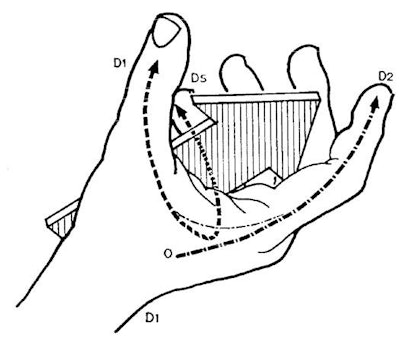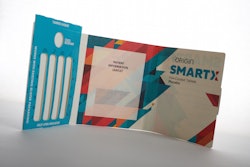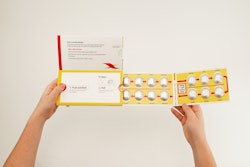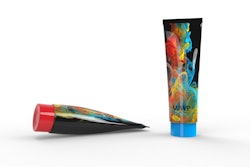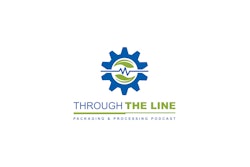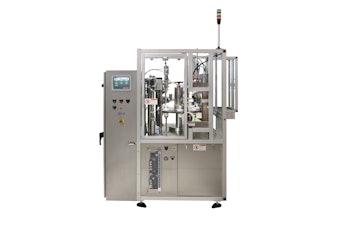Everyone wants cool packaging that sells, but what does being cool mean? For many brands being cool means a packaging design that has a stunning aesthetic that clearly differentiates the product on the shelf. But as consumers, we have all fallen for this charade by buying cool-looking packages, only to realize that once we get them home they are not intuitive, they are hard to use, and we simply wish we never bought them in the first place.
For cool packaging that sells, you must connect with the consumer on multiple sensory levels that combine to create a unique and ownable consumer product experience. To achieve this goal, we must go well beyond superficial aesthetics to measure and calibrate the visual and haptic signatures that generate pleasurable and meaningful emotional connections for the customer.
The term haptic signature captures all aspects of a person’s sense of touch regarding how a product feels in their hand with their eyes closed, including its weight, form, balance, textures, and the materials it is made from.The visual signature refers to the imagery and emotion conveyed by the product without touching it.
When these design elements aren’t managed, we have packages that—for example—make that irritating squeaking plastic noise when you open them or look and feel cheap or flimsy. These aren’t abstractions. These qualities can be systematically studied to define a palette of design cues and characteristics to convey a premeditated brand experience.
Interestingly, the minute you start to talk about quantifying design or bringing science to design, industrial designers get uneasy. They’re thinking, “You’re going to inhibit me! You’re going to restrict my creativity!” I find the exact opposite: Science and metrics empower design.
Synesthetic Design Innovation
The traditional design process starts with a broad conceptual exploration, which is fascinating but often produces ideas that are not focused on the needs of end users and are irrelevant to the product design challenge at hand. The Synesthetic Design process produces a focus for the design team. It defines the sandbox within which designers get to play, as extravagantly as they wish. And, so long as they stay within that sandbox, they’ll develop viable, cost-effective, and profitable design options. By contrast, without these boundaries, front-end conceptual exploration typically results in many cool-looking designs that can’t be fabricated or that break the bank and kill product margins. Or worse, designs that are only appealing to the designers who propose them. It may be art, but it’s not good packaging or product design.
A Synesthetic Design Innovation process is born out of the traditional User Centered Design process, but takes the levels of user insight, research, and design thinking to a deeper and broader level of investigation. Synesthetic Design Innovation begins with a general precept of understanding about how consumers think, feel, and behave. Typical tools of the trade include ethnographic research, journey mapping, usability testing, group or one-on-one interviews, competitive landscaping, and crowdsourcing consumer feedback. This is where User Centered Design stops. While these qualitative techniques provide highly valuable insights, they don’t deliver a specific assessment on how human haptic and perceptual sensory capabilities process information. And in particular, how each of these individual senses reacts to specific design features, including form, color, materials, textures, and sound. This granularity of the senses provides significant and potent information to define design attributes that must be included in the final design to drive the desired premeditated user experience.
Establishing and honoring this sensory information in design development is the key distinction between a traditional User Centered Design process and a Synesthetic Design Innovation process.
A Synesthetic Design Innovation process brings science to design. As a result, it allows us to dramatically increase the probability that the product will make an emotional connection with consumers, drive sales, and most importantly, create a meaningful brand experience that will bring customers back again and again and again.
Three critical success factors in Synesthetic Design
1: Usability is king: Remember the cool-looking package that tricked us into believing it was also well made? Its cousin is the beautiful package that doesn’t fit in the car cup holder or on the pantry shelf, or that just cannot be opened, no matter what knife, screwdriver, poultry shears, or ice pick is used. This is particularly annoying when the opening attack causes a liquid to geyser all over you or a million small dry snacks to explode all over your car. These are, to put it mildly, usability issues.
Good packaging design begins with studying all consumer touch points, from grabbing the package off the store shelf and transporting it home to the pantry, to opening and consuming the product at purchase or later, all the way through to disposal. Each of these touch points shapes and informs how the package needs to be designed for intuitive ease of use by all types of consumers.
The fundamental usability factor is that the package must be explicitly obvious and intuitive in all respects. On quick inspection, you must be able to see, interpret, and execute the best way to open the package. The successful design conveys explicit visual and tactile cues that guide optimum interaction with the package. The designer’s use of form, color, and texture leads the user experience: Hold it here, press this point, peel this off.
Usability testing is the designer’s friend. It’s effective through the entire design and development process for evaluating every design detail. Key to reliable usability testing is engaging a wide range of consumer types and conducting tests in real-life settings, where the design must stand up to the real world. Video-recording the tests is critical because no one can ever catch all interactions. The video record will disclose patterns of behavior, pain points, and inefficiencies in the design. It will also reveal consumer personas—those unique groups of users that have equally unique needs—so your design can accommodate a range of physical characteristics such as dexterity, range of joint motion, and vision.
2. Fit my hands! We come in different sizes and shapes, and so do our hands. The difference between a small female hand and a large male hand can be as much as 1.75 inches in length and 1.25 inches in hand breadth, so accommodating a range of users requires design that accommodates these large physical variations.
Furthermore, as hands increase in size so does their strength. Bigger hands with larger muscles are also stronger hands. For purposes of design, we commonly use a fifth-percentile female hand to define the maximum amount of force required to open a package. When that works, all larger hands will be accommodated as well.
User age is an important design element for hand function. In general, aging brings decreasing strength and joint calcification. Many females 60 years old and older have a hand strength of 50% or less than when in their twenties and thirties. And all aging hands lose their fingertip cushions, so textures that feel wonderful to Millennials will become uncomfortable point loads for older users.
A Synesthetic Design solution to a usability issue is to reverse-engineer the package design to fit human performance. For example, fabrication and shipping parameters or shelf stability may dictate the amount of peel strength to remove a seal, the torque required to twist off a cap, or the pull strength to tear along a perforated seal. If you know that it takes 15 N of peel strength to remove the foil seal on a beverage and if you also know how strong individual fingers are, you can determine how many fingers are needed as well as the optimum grip architecture. That in turn will tell you how big the pull tab needs to be and what surface textures will allow for a good grasp.
3. Make me feel good: This is where Synesthetic Design thinking plays a particularly significant role. Let’s assume we have addressed the usability and fit factors. Now we need to make an emotional connection with our consumer.
To create an emotional link, you need to investigate and understand how specific haptic and perceptual design features are sensed, and what emotional reactions consumers have to each of these individual attributes. By systematically presenting research stimuli that individually test haptic and visual attributes and then allowing the consumer to interact with those stimuli using all sensory modalities, you can identify specific design attributes that create positive, neutral, and negative emotional reactions. The designer is then empowered by the most arresting attributes to develop a new design that cues the sensory response and the associated emotion to drive the unique and ownable consumer brand experience that creates cool packages that sell.
For example, in a recent study for WestRock using a Synesthetic Design research process, we identified and defined specific physical, visual design, and ergonomic attributes necessary for the package design to express a premium luxury image in the beauty care market.
Beauty is skin deep in both people and packaging, and even the most potent aesthetics cannot rescue a design that does not address usability, fit, and human performance issues. Cool-looking packages that do not perform create a transitory positive emotion in the consumer but end in disappointment—not the emotion any brand wants from its package.
Synesthetic Design = empowered design
A Synesthetic Design Innovation strategy provides design teams with the ability to immediately focus on relevant creative spaces rather than wandering in the woods, hoping that one of 30 sketches catches the attention of consumers in a focus group test. The discipline of Synesthetic Design creates a more powerful design process. In most design test projects, consumers really don’t know what they need or want because they’ve never seen anything different from what they are currently using. The potency of a Synesthetic Design Innovation process is that it quantifies the visual and haptic qualities of the product that collectively are guaranteed to convey the user experience you want aligned with your package and your brand. And all this happens before the product gets to market, mitigating the cost of being wrong. Synesthetic Design truly differentiates your packaging design in a crowded market, supporting the product and the brand in achieving increased revenues and market share.
Dr. Bryce Rutter is founder and CEO of Metaphase Design Group. He can be reached at [email protected].
